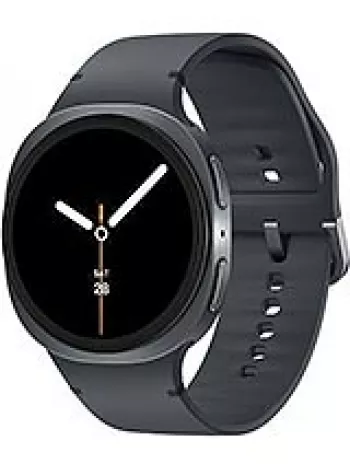
Overview
The Samsung D810 was released in the first quarter of 2006 and became part of Samsung's feature phone lineup during that era. While it may not have the advanced capabilities of today's smartphones, it represented a solid option for users seeking basic communication and media features in a mobile device.
Design and Build
The Samsung D810 boasts a compact and sturdy design, with dimensions measuring 98 x 51 x 14.5 mm and a weight of just 98 g. This ensured the phone was easily portable, fitting comfortably in hand or pocket. The body material is durable, providing a sense of reliability and endurance. It features a Mini-SIM slot, which was standard for phones during that period.
Display
The D810 comes with a 2.0-inch TFT display that supports 256K colors. With a resolution of 240 x 320 pixels, the screen offers decent clarity for basic phone tasks such as viewing text messages or managing contacts. The screen-to-body ratio stands at roughly 24.8%, which is typical for feature phones where screens were significantly smaller than modern smartphones.
Camera
For photography, the Samsung D810 features a single 1.3 MP camera. While modest by today's standards, this was a common camera resolution for feature phones of its time. The camera includes an LED flash to assist in low-light conditions and is capable of recording video in CIF format, providing basic video capturing capabilities.
Audio and Connectivity
The phone includes a loudspeaker for media playback and call audio. Alert options include vibration and downloadable polyphonic or MP3 ringtones. Unlike contemporary devices, the D810 lacks a 3.5mm headphone jack, relying instead on proprietary connectors. Connectivity options include Bluetooth version 1.2, allowing for wireless pairing with compatible devices. There is no WLAN or positioning (like GPS); however, the phone does allow for basic internet browsing via WAP 2.0/xHTML.
Memory and Storage
The device provides 80 MB of internal storage, which was reasonably sufficient for storing contacts, text messages, and a limited amount of multimedia content at the time. It does not have a card slot for expandable storage, which is a limitation if users require more space for files and applications. The phonebook accommodates up to 1000 entries with room for multiple fields and photo IDs, making contact management efficient.
Operating System and Software
The Samsung D810 operates with basic feature phone software typical of its era. It supports messaging formats such as SMS, MMS, and Email, broadening the scope of communication. Java MIDP 2.0 support permits the installation of small applications and games, such as the pre-installed options like "Forgotten Warrior" and "Freekick."
Battery
Observing battery life, the Samsung D810 is powered by a removable Li-Ion 800 mAh battery. This power pack allows for a standby duration of up to 180 hours and a talk time of approximately 3 hours. While modern smartphones typically provide longer battery life, the D810's power capacity was adequate for the device’s limited functions and screen use.
Network and Connectivity
The D810 operates on GSM networks, specifically on frequencies of 900, 1800, and 1900. For mobile data, it offers GPRS and EDGE technologies of Class 10 standard. The absence of 3G or 4G connectivity is indicative of its time, as 2G networks were widespread and sufficient for the basic data needs of feature phones.
Conclusion
In summary, the Samsung D810 served its role as an efficient, entry-level communication device in its time. While it doesn’t compare to today's advanced smartphones with large screens and high-resolution cameras, it provided a sufficient set of features for consumers in the mid-2000s. Its design, network capabilities, basic camera, and multimedia functions meant it met basic user needs. Despite its discontinuation, it represents a significant phase in the evolution of mobile phones, leading towards more advanced technology.
Key Features of Samsung D810
- Compact dimensions: 98 x 51 x 14.5 mm, with a lightweight design at 98 g.
- Display: 2.0-inch TFT with 256K colors and a resolution of 240 x 320 pixels.
- Camera: 1.3 MP with LED flash for basic photography needs.
- Connectivity: Includes Bluetooth 1.2 for wireless communication.
- Storage: 80MB of internal memory with a comprehensive phonebook capacity.
- Audio: Supports downloadable polyphonic and MP3 ringtones.
- Battery: Removable Li-Ion 800 mAh battery with up to 180 hours of standby time.
- Java support: Java MIDP 2.0 for additional applications and games.
Samsung D810 Drawbacks
- Lacks 3G or 4G connectivity, only supports GSM.
- No memory card slot for expandable storage.
- Small internal storage capacity of 80MB.
- Basic 1.3 MP main camera with limited video recording capabilities (CIF).
- No selfie camera for front-facing photos or video calls.
- No Wi-Fi support, limiting internet connectivity options.
- Missing a 3.5mm headphone jack for standard audio connections.
- No GPS functionality for location-based services.
- Does not include an FM radio feature.
- Bluetooth version 1.2 is outdated and supports limited connections.
- Proprietary USB connection instead of a more common port type.
- Screen size is relatively small at 2.0 inches, with a low screen-to-body ratio.
- Battery life is limited, with up to 3 hours of talk time.


View Also
More Phones
All Rights Reserved +14266 Phones © Mobilawy 2025

























